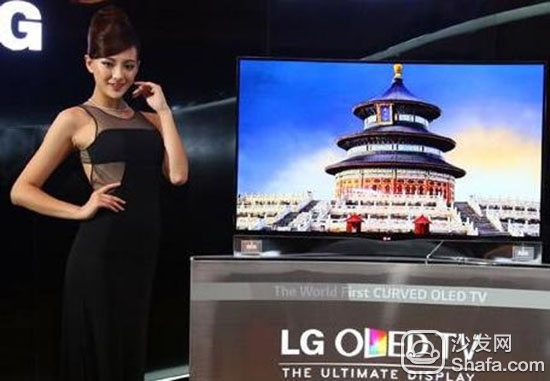Due to high selling prices and low panel production capacity, OLED (Organic Light Emitting Diode) televisions have a dismal market in 2014, with total global sales of less than 1 million units. Last year, the total sales volume of global color TVs exceeded 200 million units.

As the world's leading OLED TV panel and complete machine maker, LG is in a hurry. Recently, at a 2015 new television show, Kwon Bong-Seok, vice president of LG Electronics' home entertainment division, said that compared to last year, LG Electronics' sales target for OLED TVs this year is tenfold growth.
LG Display, a panel maker of LG Electronics Holdings, invested about 700 billion won (approximately 4 billion yuan) last year to add an OLED panel production line, which is costly. At the CES 2015 in the United States, LG launched a lineup of seven major models of OLEDs in five major series.
However, industry sources said that OLED TV market cultivation, TV production costs and panel supply are still critical. According to the review, the current prices of LG Electronics 65-inch and 55-inch ultra-high-definition OLED TVs are equivalent to RMB 62,000 and RMB 39,000 respectively. Constrained by the limitation of upstream panel capacity, there aren't many TV makers that sell OLED TVs together with LG, and it is difficult for the industry to form a scale.
House seemingly endless rain. In January of this year, a nitrogen leak occurred at the LG Display panel factory located on the month's cage in Paju, Gyeonggi-do, South Korea. Two people died in the accident. The incident also affected the organic evaporation process of OLED TV panels.

Since the initial launch of mass-produced OLED TVs and on the market, LG has been trying to form a OLED TV popularity camp together with Chinese manufacturers in the past 2 years to combat Samsung's surface UHD. However, OLED's market conditions have not been able to do so. Whether it is TV companies or the upstream panel industry, the popularity of OLED TVs has been shown to be "less bearish" in the short term, and the more optimistic estimate is also five years later.
According to Zhang Yu, vice president of BOE, in the long run, OLED is the mainstream in the future, but it still takes about 10 years to spread because OLED TV panels still have many bottlenecks to break through, such as screen life, lower costs, and improved yield.


As the world's leading OLED TV panel and complete machine maker, LG is in a hurry. Recently, at a 2015 new television show, Kwon Bong-Seok, vice president of LG Electronics' home entertainment division, said that compared to last year, LG Electronics' sales target for OLED TVs this year is tenfold growth.
LG Display, a panel maker of LG Electronics Holdings, invested about 700 billion won (approximately 4 billion yuan) last year to add an OLED panel production line, which is costly. At the CES 2015 in the United States, LG launched a lineup of seven major models of OLEDs in five major series.
However, industry sources said that OLED TV market cultivation, TV production costs and panel supply are still critical. According to the review, the current prices of LG Electronics 65-inch and 55-inch ultra-high-definition OLED TVs are equivalent to RMB 62,000 and RMB 39,000 respectively. Constrained by the limitation of upstream panel capacity, there aren't many TV makers that sell OLED TVs together with LG, and it is difficult for the industry to form a scale.
House seemingly endless rain. In January of this year, a nitrogen leak occurred at the LG Display panel factory located on the month's cage in Paju, Gyeonggi-do, South Korea. Two people died in the accident. The incident also affected the organic evaporation process of OLED TV panels.

Since the initial launch of mass-produced OLED TVs and on the market, LG has been trying to form a OLED TV popularity camp together with Chinese manufacturers in the past 2 years to combat Samsung's surface UHD. However, OLED's market conditions have not been able to do so. Whether it is TV companies or the upstream panel industry, the popularity of OLED TVs has been shown to be "less bearish" in the short term, and the more optimistic estimate is also five years later.
According to Zhang Yu, vice president of BOE, in the long run, OLED is the mainstream in the future, but it still takes about 10 years to spread because OLED TV panels still have many bottlenecks to break through, such as screen life, lower costs, and improved yield.
Recommended installation sofa butler, download address: http://app.shafa.com/

Hot Apps Recommended: HDP VST All-in-one Fast-viewing film Dragons Live Karaoke King TV Thumb Playing ZAKER